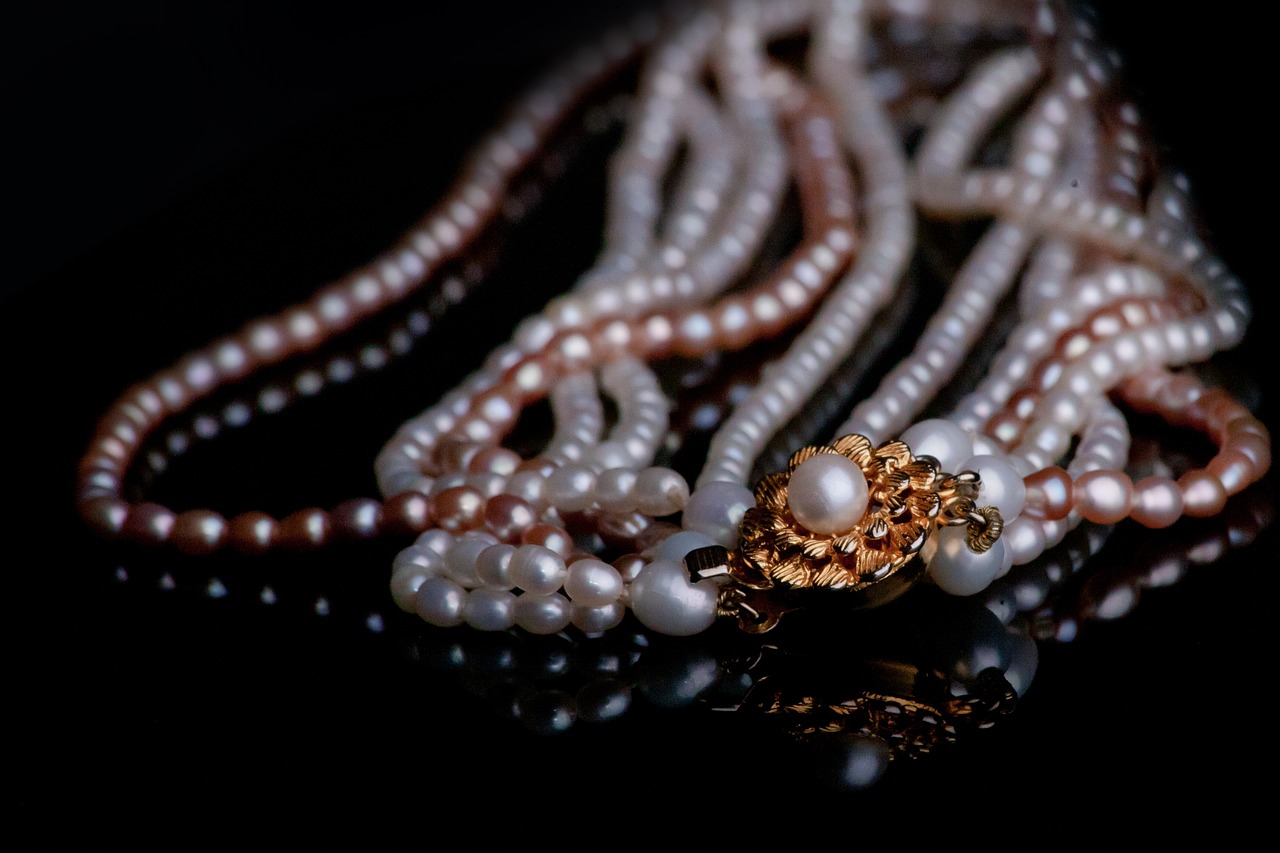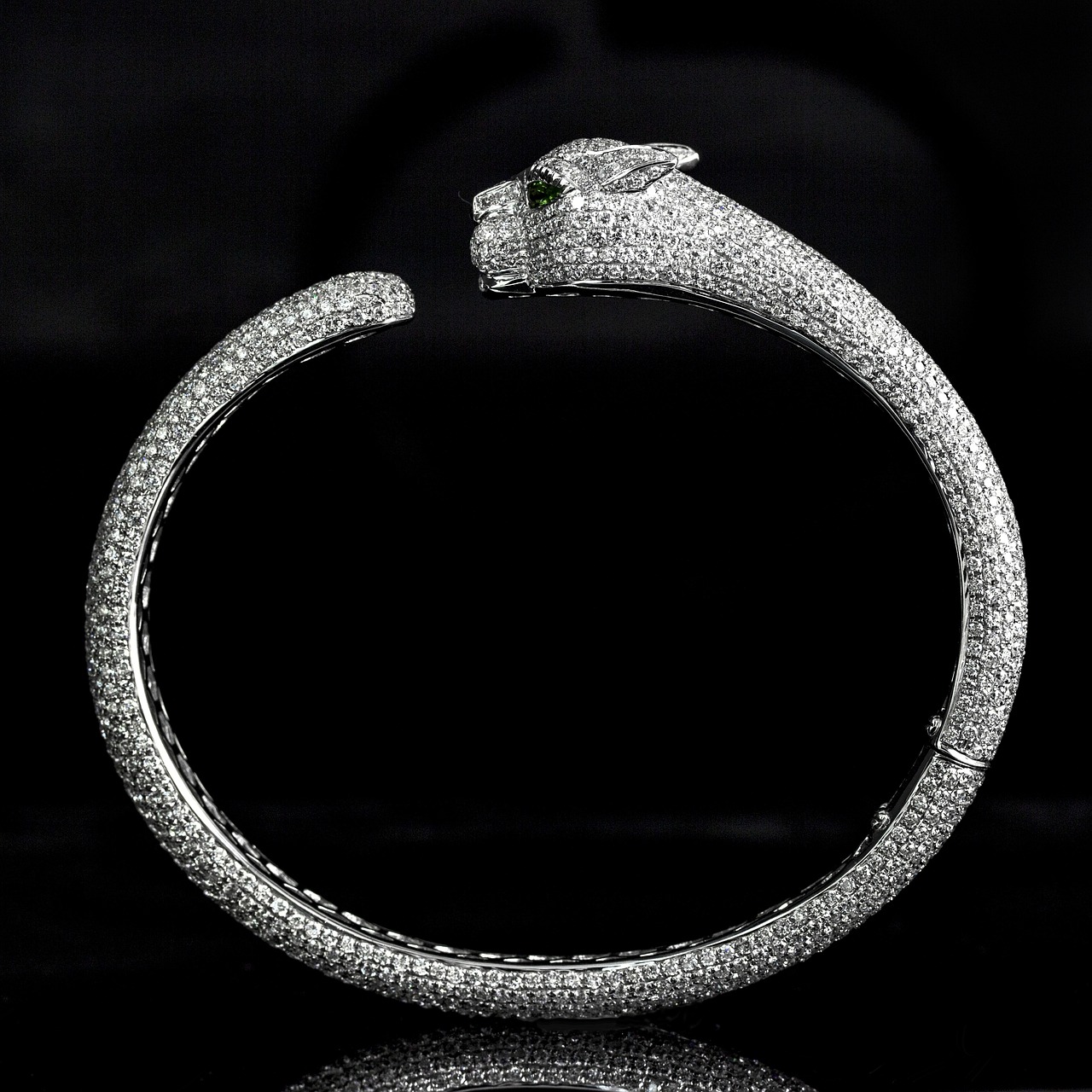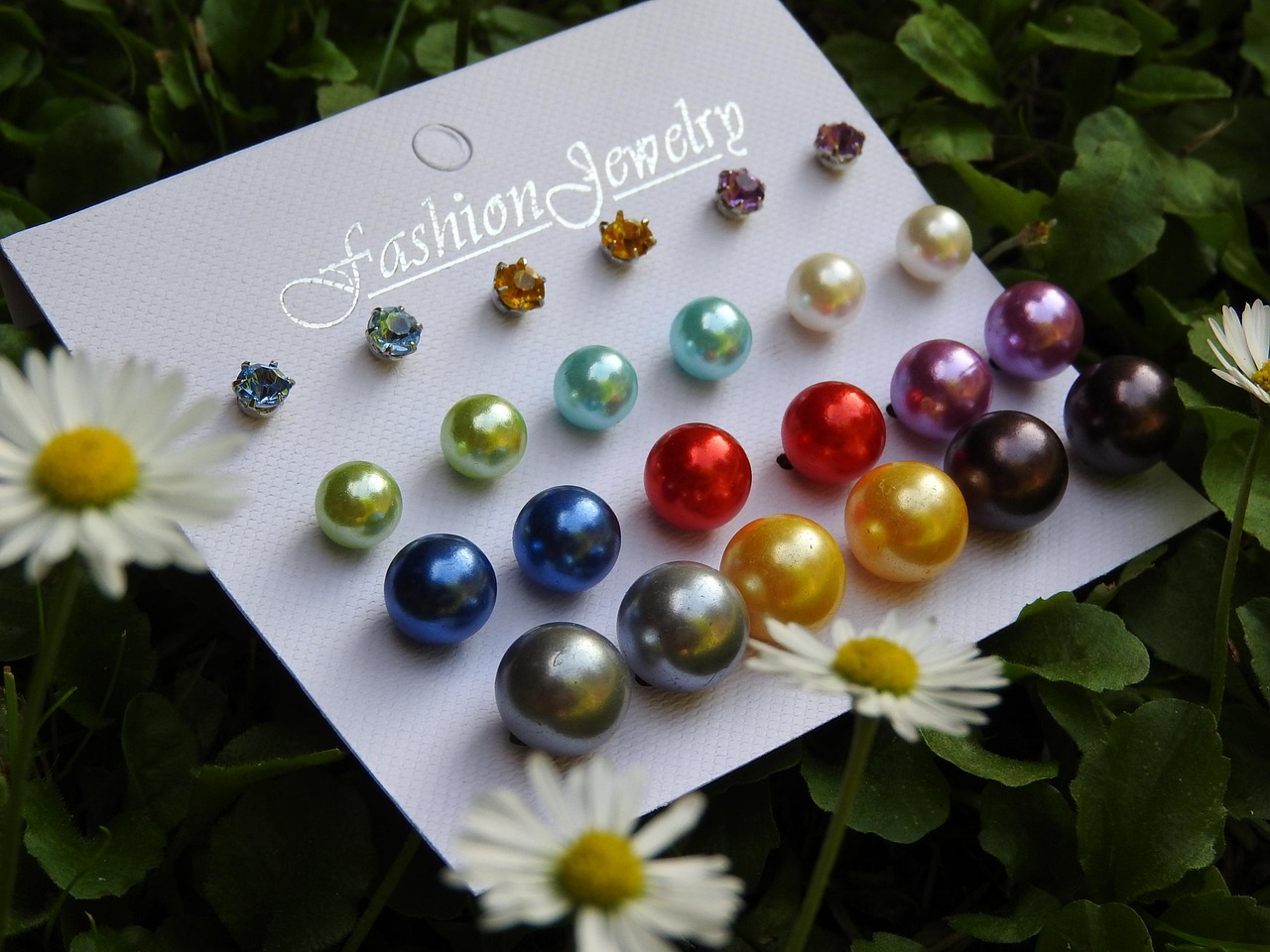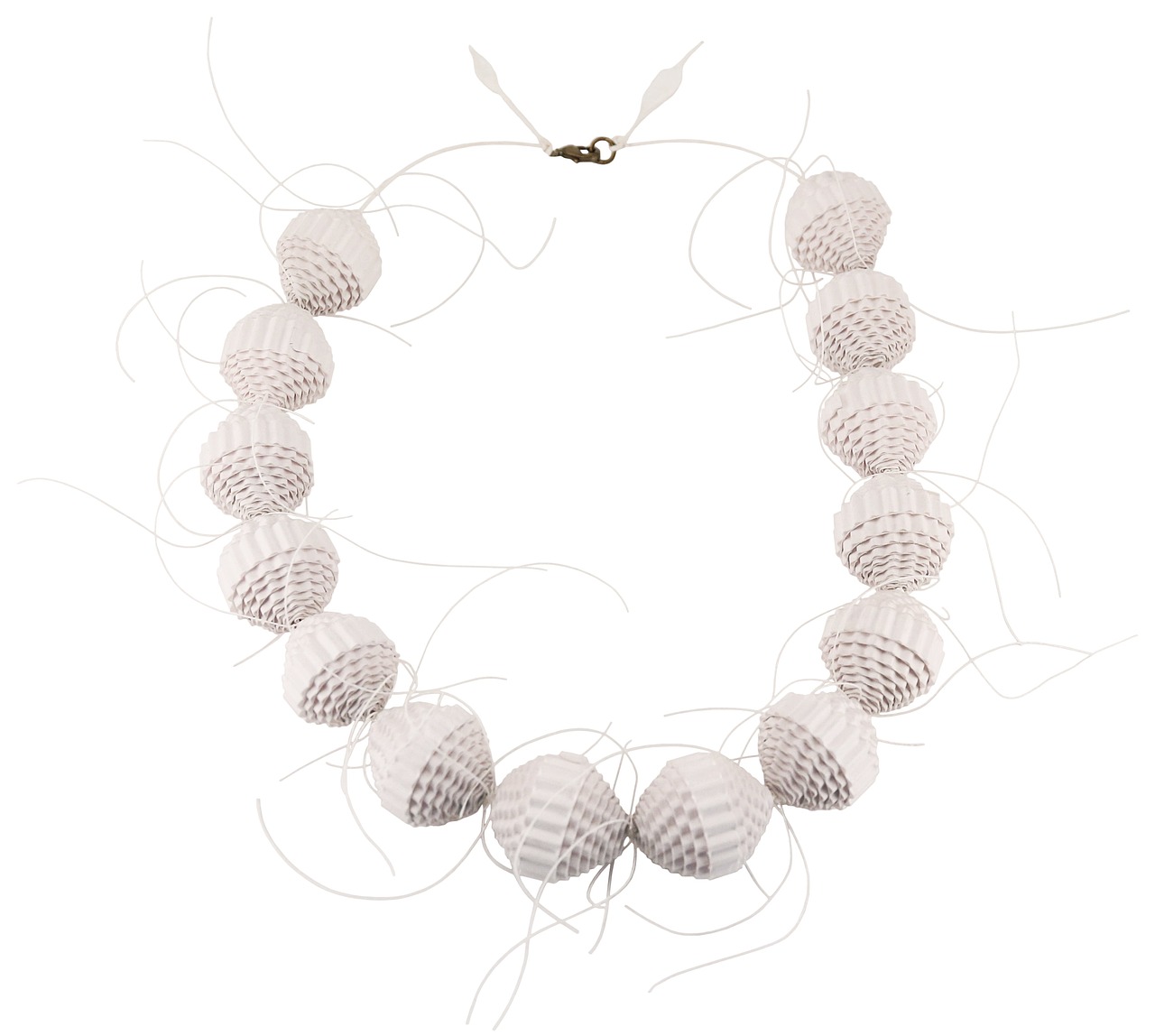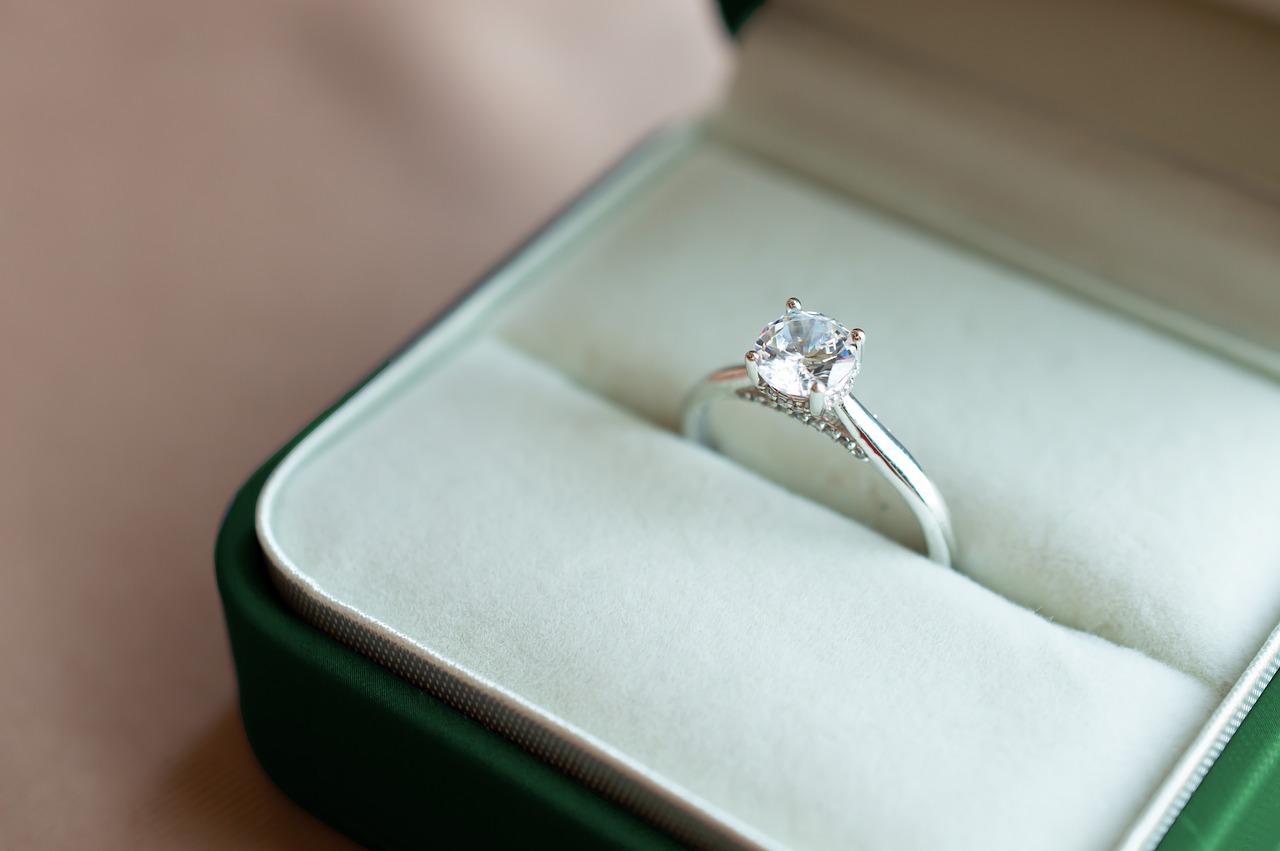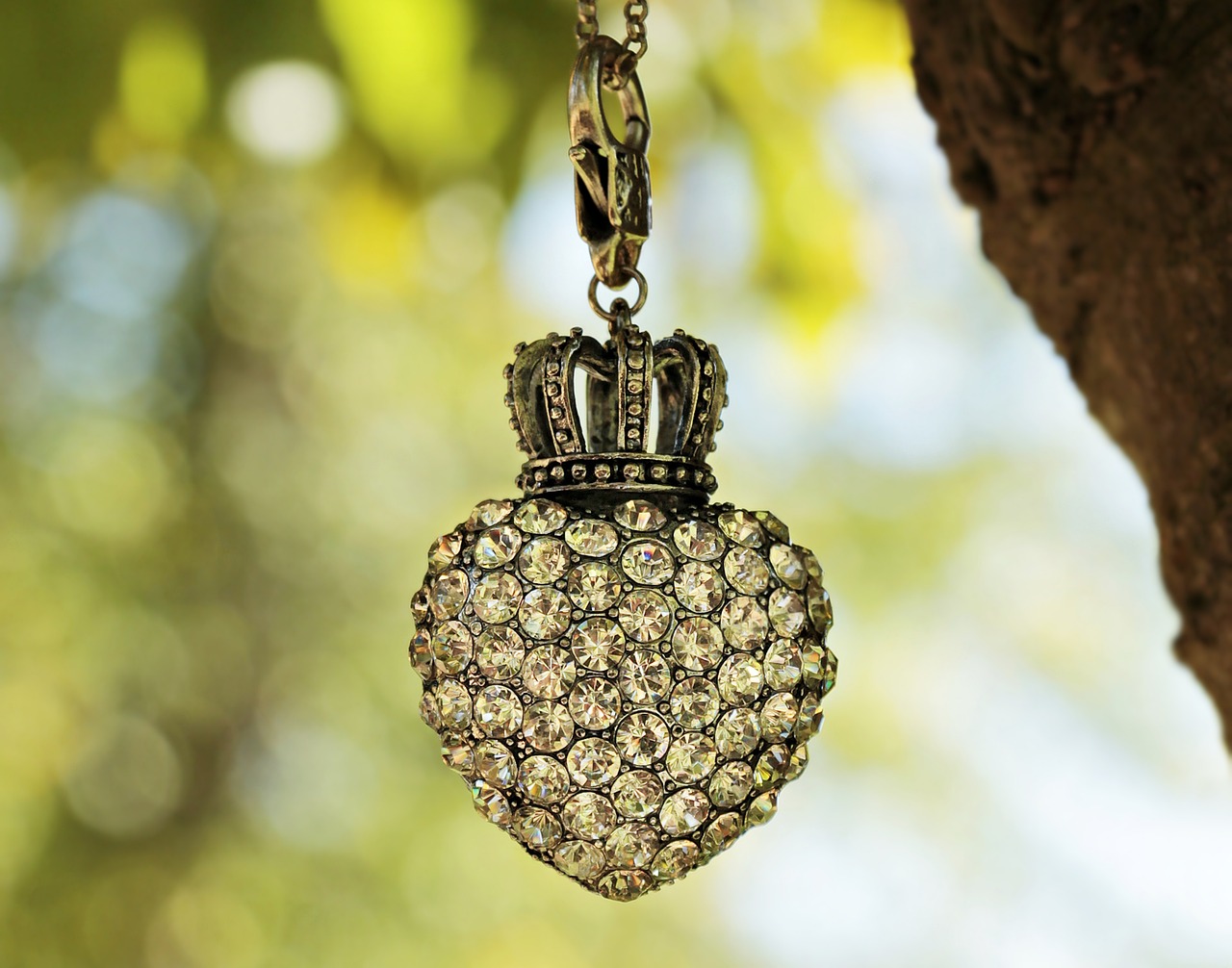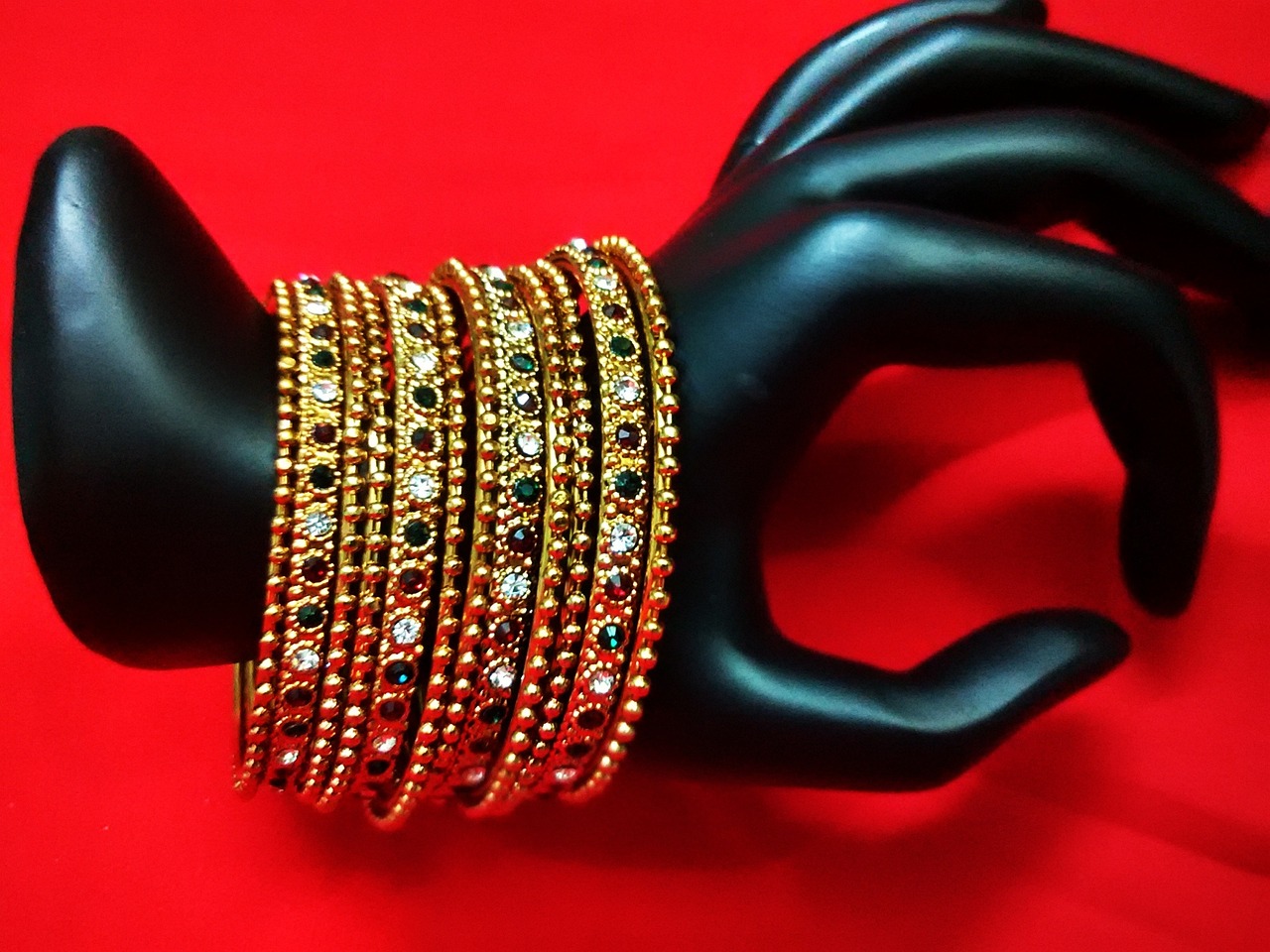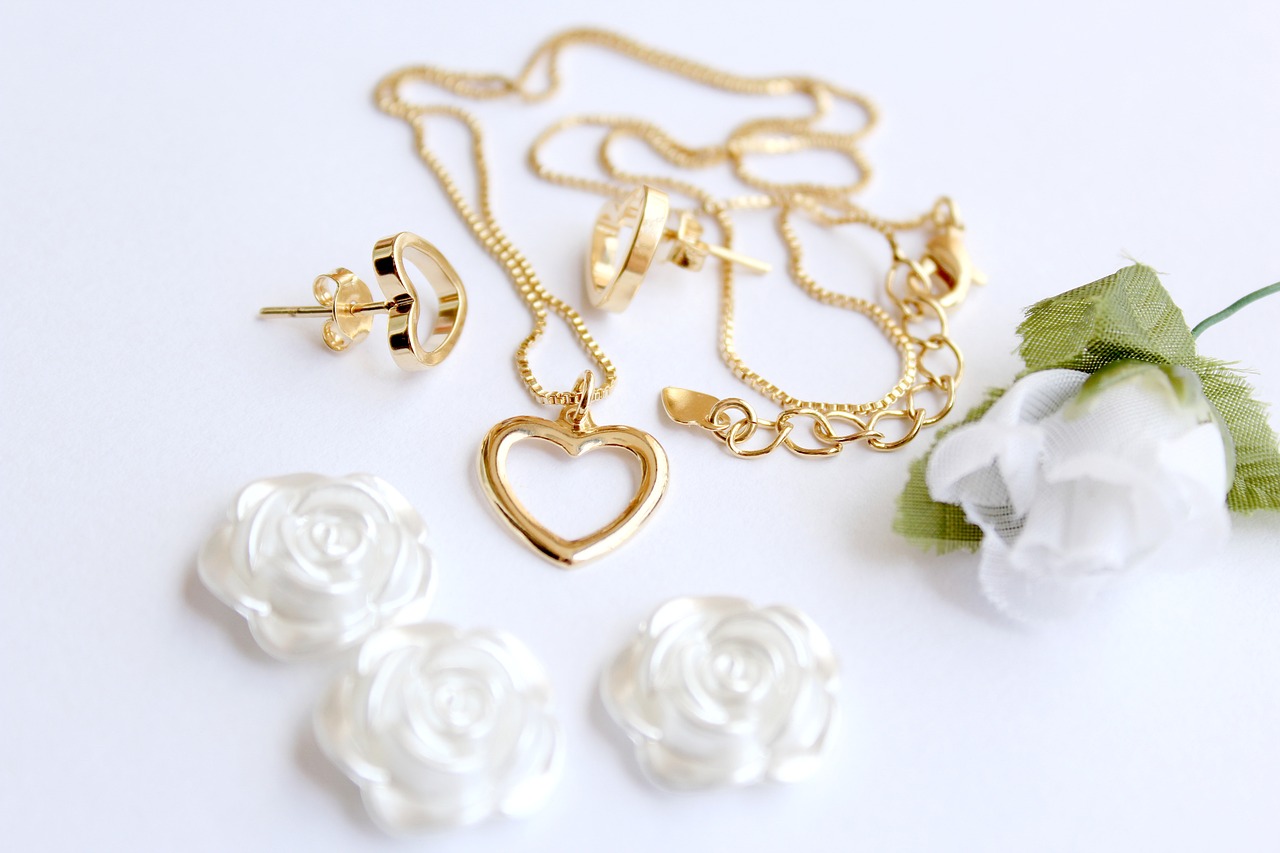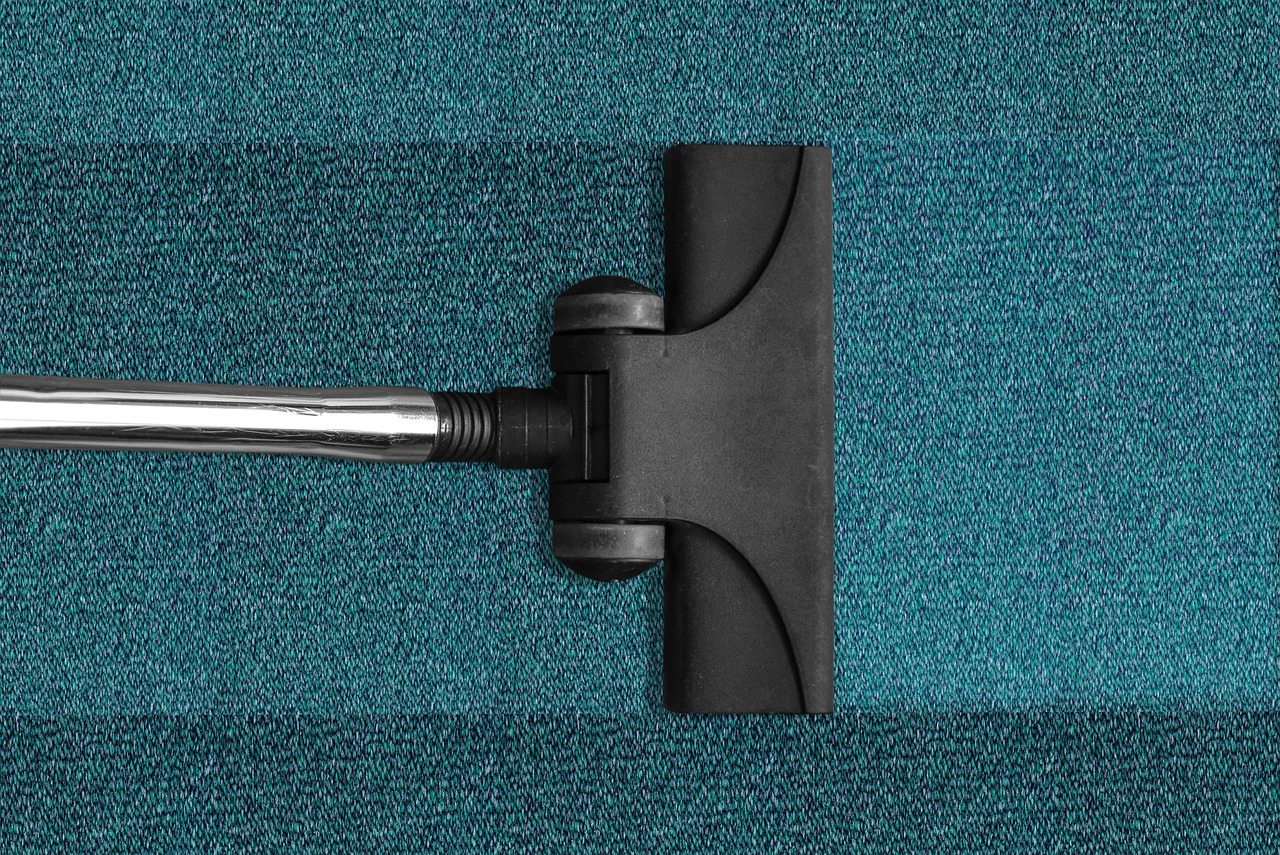This article provides essential tips and methods for storing jewelry to maintain its beauty and prevent damage such as tarnishing and scratches, ensuring longevity and shine.
Understanding the significance of proper storage can help you preserve the quality and appearance of your jewelry. Proper storage not only prevents costly repairs but also maintains the sentimental value of your cherished pieces. Jewelry is often an investment, and treating it with care ensures it remains a treasured part of your collection.
Choosing the right materials for jewelry storage is crucial. Some materials can cause tarnishing or scratches, while others provide adequate protection and organization.
- Fabric-lined Jewelry Boxes: These are ideal for preventing scratches. The soft material cushions the jewelry, reducing friction during storage.
- Anti-tarnish Pouches and Cloths: These contain special chemicals that absorb moisture and prevent tarnishing, significantly extending the life of your jewelry.
Organizing your jewelry not only keeps it safe but also allows for easy access. Effective organization methods can enhance your storage experience and reduce clutter.
- Drawer Organizers: These help separate different types of jewelry, making it easier to find what you need without rummaging through a tangled mess.
- Wall-mounted Displays: These are an attractive way to showcase jewelry while keeping it safe, minimizing the risk of scratches.
Identifying common storage mistakes can help you avoid damaging your jewelry. Understanding these pitfalls can lead to better practices and longer-lasting pieces.
- Storing Jewelry in Direct Sunlight: This can cause fading and discoloration. It’s essential to store items in a cool, dark place.
- Mixing Different Types of Jewelry: This can lead to scratches and tangling. Keeping metal, gemstones, and costume jewelry separate helps preserve their condition.
Cleaning jewelry before storage is vital for preventing tarnish and ensuring it remains in pristine condition. Proper cleaning techniques can enhance the longevity of your pieces.
- Gentle Cleaning Solutions: Using gentle cleaning solutions ensures delicate materials are not harmed. Select appropriate products to avoid damaging your jewelry.
- Drying and Polishing Techniques: Proper drying and polishing can remove moisture and prevent tarnishing. Ensure that jewelry is completely dry before storage.
Environmental conditions play a significant role in the preservation of jewelry. Understanding these factors can help you create an optimal storage environment.
- Humidity Control: High humidity can lead to tarnishing. Using silica gel packets or dehumidifiers in your storage area can help maintain an ideal environment.
- Temperature Considerations: Extreme temperatures can damage jewelry. Keeping your collection in a stable, moderate temperature prevents warping and other forms of damage.
Regular checks on your jewelry storage can help you identify potential issues early. This ensures your pieces remain in excellent condition over time.
- Routine Inspections: Conducting routine inspections allows you to spot any signs of tarnishing or damage.
- Reorganizing as Needed: Periodically reorganizing your storage system ensures your jewelry remains protected and accessible.
Incorporating additional tips into your jewelry care routine can further enhance the longevity and appearance of your beloved pieces.
- Limit Wearing Jewelry in Certain Situations: Avoid wearing jewelry during activities that may cause damage, such as exercising or swimming.
- Invest in Quality Storage Solutions: Investing in high-quality storage solutions can significantly preserve your jewelry. Well-made options provide better protection against tarnishing and scratches.

Why Is Proper Jewelry Storage Important?
When it comes to preserving your jewelry, understanding why proper storage is important cannot be overstated. Jewelry is not just an accessory; it often holds sentimental value and can be an investment. Proper storage techniques are essential to maintain the quality, appearance, and longevity of these precious items.
One of the primary reasons for proper jewelry storage is to prevent damage. Over time, exposure to elements such as moisture, sunlight, and air can lead to tarnishing and discoloration. For example, silver jewelry is particularly susceptible to tarnishing when exposed to humidity. By storing your pieces in a controlled environment, you can significantly reduce the risk of damage.
Another critical factor is maintaining organization. A well-organized jewelry storage system allows you to easily access your favorite pieces without the hassle of untangling chains or searching through a cluttered box. This not only saves time but also minimizes the risk of accidental damage during the search process.
Moreover, proper storage can help in preserving the value of your jewelry. Whether it’s a family heirloom or a recent purchase, keeping your jewelry in excellent condition can enhance its resale value. Regular maintenance and proper storage can prevent costly repairs that may arise from neglect or improper handling.
Additionally, understanding the materials you use for storage is crucial. Some materials can cause scratches or tarnishing, while others provide adequate protection. For instance, using fabric-lined jewelry boxes or anti-tarnish pouches can protect your pieces from scratches and moisture. The right storage materials can create a protective barrier that extends the life of your jewelry.
Another aspect of jewelry storage is the environmental factors that can affect your collection. High humidity levels can accelerate tarnishing, while extreme temperatures can warp delicate materials. Therefore, it’s essential to store your jewelry in a cool, dry place, away from direct sunlight. Using silica gel packets or dehumidifiers can help control humidity levels in your storage area.
Lastly, regular checks on your jewelry storage can help you identify potential issues before they escalate. Conducting routine inspections allows you to spot any signs of damage or tarnishing, enabling you to take action promptly. This proactive approach can save you from costly repairs in the future and ensure your jewelry remains in excellent condition.
In conclusion, understanding the significance of proper jewelry storage is vital for preserving the quality and appearance of your pieces. By investing in the right storage solutions, maintaining organization, and being mindful of environmental factors, you can protect your jewelry from damage, maintain its value, and keep it looking beautiful for years to come.
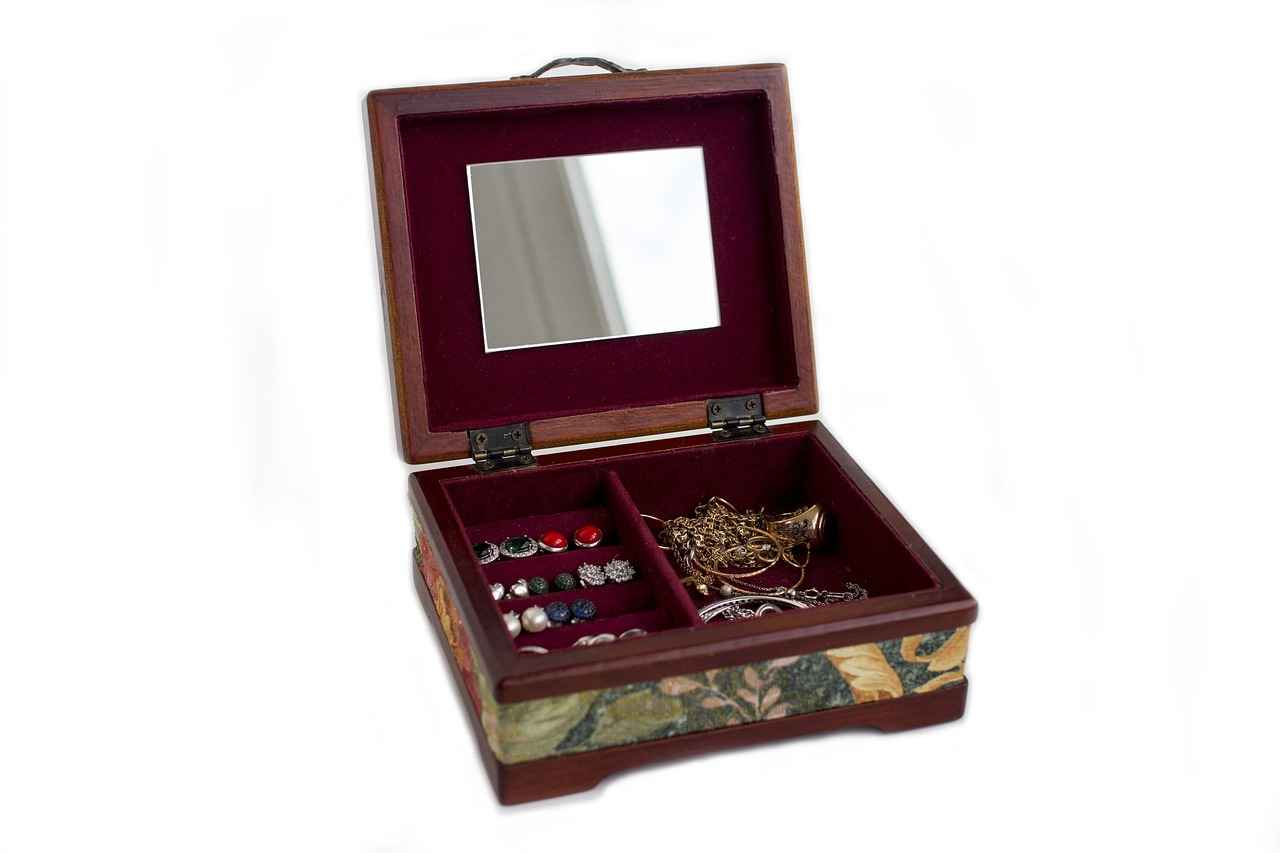
What Materials Are Best for Jewelry Storage?
When it comes to preserving the beauty and longevity of your jewelry, choosing the right materials for storage is absolutely essential. The materials you select can significantly impact the condition of your pieces, influencing factors such as tarnishing and scratching. Below, we explore various materials that are ideal for jewelry storage, ensuring your treasures remain safe and sparkling.
The choice of storage materials can either protect your jewelry or contribute to its deterioration. For instance, certain metals and fabrics can cause tarnishing or scratches, while others offer optimal protection. Understanding the properties of various materials can help you make informed decisions, ultimately extending the life of your cherished pieces.
- Fabric-Lined Jewelry Boxes: These boxes are a popular choice due to their ability to cushion jewelry, preventing scratches. The soft fabric lining minimizes friction, making it ideal for delicate items like pearls and gemstone rings.
- Wooden Boxes: Wooden jewelry boxes, especially those with a velvet or felt lining, provide a classic aesthetic while protecting jewelry from dust and scratches. Ensure that the wood is untreated to avoid chemical reactions that could tarnish metals.
- Anti-Tarnish Bags: Made from materials that contain anti-tarnish properties, these bags absorb moisture and prevent oxidation. They are especially effective for silver jewelry, which is prone to tarnishing.
- Plastic Containers: While not the most luxurious option, high-quality plastic containers can effectively organize jewelry. Choose acid-free plastic to avoid chemical reactions that may harm your pieces.
- Silk and Satin Pouches: Ideal for travel, these soft pouches protect jewelry from scratches and tangling. They are particularly useful for earrings and delicate chains.
The environment where you store your jewelry is just as important as the materials used. Humidity and temperature can significantly affect the integrity of your jewelry. High humidity can lead to tarnishing, while extreme temperatures can warp delicate pieces. Consider using silica gel packets in your storage area to control moisture levels.
Many people unknowingly make mistakes that can damage their jewelry. For instance, storing different types of jewelry together can lead to scratches and tangling. It’s advisable to keep metals, gemstones, and costume jewelry separate to preserve their condition.
Regular maintenance of your jewelry storage area is crucial. Conduct routine inspections to check for signs of tarnishing or damage. Additionally, reorganizing your storage system periodically will help ensure that your jewelry remains protected and easily accessible.
In conclusion, the right materials for jewelry storage can make a significant difference in preserving the beauty and longevity of your pieces. By investing in quality storage solutions, you can protect your jewelry from tarnishing and scratches, ensuring that it remains a cherished part of your collection for years to come.
Fabric-lined Jewelry Boxes
When it comes to storing your precious jewelry, the choice of storage materials can significantly impact the longevity and condition of your pieces. Among the various options available, stand out as a superior choice for protecting your jewelry from scratches and other forms of damage.
Fabric-lined boxes are designed specifically to provide a soft and cushioned environment for your jewelry. Unlike traditional hard boxes that can cause friction and scratches during storage, these boxes use soft materials that cradle each piece gently. This cushioning effect is essential for preventing unwanted scratches that can mar the surface of your jewelry, especially delicate items like earrings and necklaces.
One of the key advantages of fabric-lined boxes is their ability to reduce friction. When jewelry is stored in a hard container, movement can lead to contact between pieces, resulting in scratches and scuffs. Fabric-lined interiors mitigate this risk by providing a smooth surface that allows jewelry to rest without harsh contact. This is particularly beneficial for items with intricate designs or soft gemstones that are more susceptible to damage.
Additionally, fabric-lined jewelry boxes often come with various compartments and sections, allowing for organized storage. This organization not only keeps pieces separated but also makes it easier to find specific items without disturbing others. Many jewelry enthusiasts appreciate this feature, as it simplifies the process of selecting jewelry for any occasion.
Moreover, the aesthetic appeal of fabric-lined boxes cannot be overlooked. Available in various colors and patterns, these boxes can complement your decor while serving a practical purpose. They can be an attractive addition to your dressing table or closet, enhancing the overall look of your jewelry collection.
For those concerned about tarnishing, many fabric-lined boxes also include anti-tarnish properties. Some manufacturers incorporate special materials that help absorb moisture, further protecting your jewelry from tarnishing due to environmental factors. This is an essential feature for anyone looking to maintain the shine and beauty of their silver and gold pieces.
In conclusion, investing in is a wise decision for anyone serious about jewelry care. These boxes not only provide superior protection against scratches but also offer a stylish and organized way to store your collection. By choosing the right storage solutions, you can ensure that your jewelry remains in pristine condition for years to come.
Anti-tarnish Pouches and Cloths
When it comes to protecting your precious jewelry from tarnishing, are essential tools that every jewelry owner should consider. These products are designed with advanced materials and special chemicals that actively absorb moisture and prevent the formation of tarnish on metals such as silver, gold, and platinum. By utilizing these protective items, you can significantly prolong the life and beauty of your jewelry pieces.
Anti-tarnish pouches are specially designed storage bags that contain chemical compounds that neutralize tarnishing agents in the air. These pouches work by creating a controlled environment that minimizes exposure to moisture and pollutants, which are common culprits in tarnishing. When you place your jewelry inside these pouches, you are effectively creating a barrier that helps maintain its luster and shine.
Similar to pouches, anti-tarnish cloths are treated with special chemicals that prevent tarnish from forming on your jewelry. These cloths can be used to wipe down your jewelry before storing it, ensuring that any moisture or contaminants are removed. Additionally, using an anti-tarnish cloth for regular cleaning can help keep your pieces looking their best, as they not only prevent tarnishing but also provide a gentle polishing effect.
- Extended Lifespan: Regular use of anti-tarnish pouches and cloths can significantly extend the lifespan of your jewelry.
- Cost-Effective: Preventing tarnish can save you money on professional cleaning and repairs.
- Convenience: These products are easy to use and can be incorporated into your regular jewelry care routine.
- Versatile: Suitable for various types of jewelry, including rings, necklaces, and bracelets.
To maximize the benefits of anti-tarnish pouches and cloths, follow these simple steps:
- Clean Your Jewelry: Before storing, make sure your jewelry is clean and dry. Use an anti-tarnish cloth to wipe away any dirt or moisture.
- Store Properly: Place your jewelry inside the anti-tarnish pouch, ensuring that it is fully enclosed to limit exposure to air.
- Regular Maintenance: Periodically check your jewelry and replace the anti-tarnish pouch or cloth as needed, especially if you notice any signs of wear.
Anti-tarnish pouches and cloths can be found at most jewelry stores, craft stores, and online retailers. When shopping, look for reputable brands that specify the use of effective tarnish-preventing chemicals. Reading customer reviews and product descriptions can also help you make an informed choice.
In conclusion, utilizing is a practical and effective way to protect your jewelry from tarnishing. By incorporating these products into your jewelry care routine, you can ensure that your treasured pieces remain beautiful and vibrant for years to come.
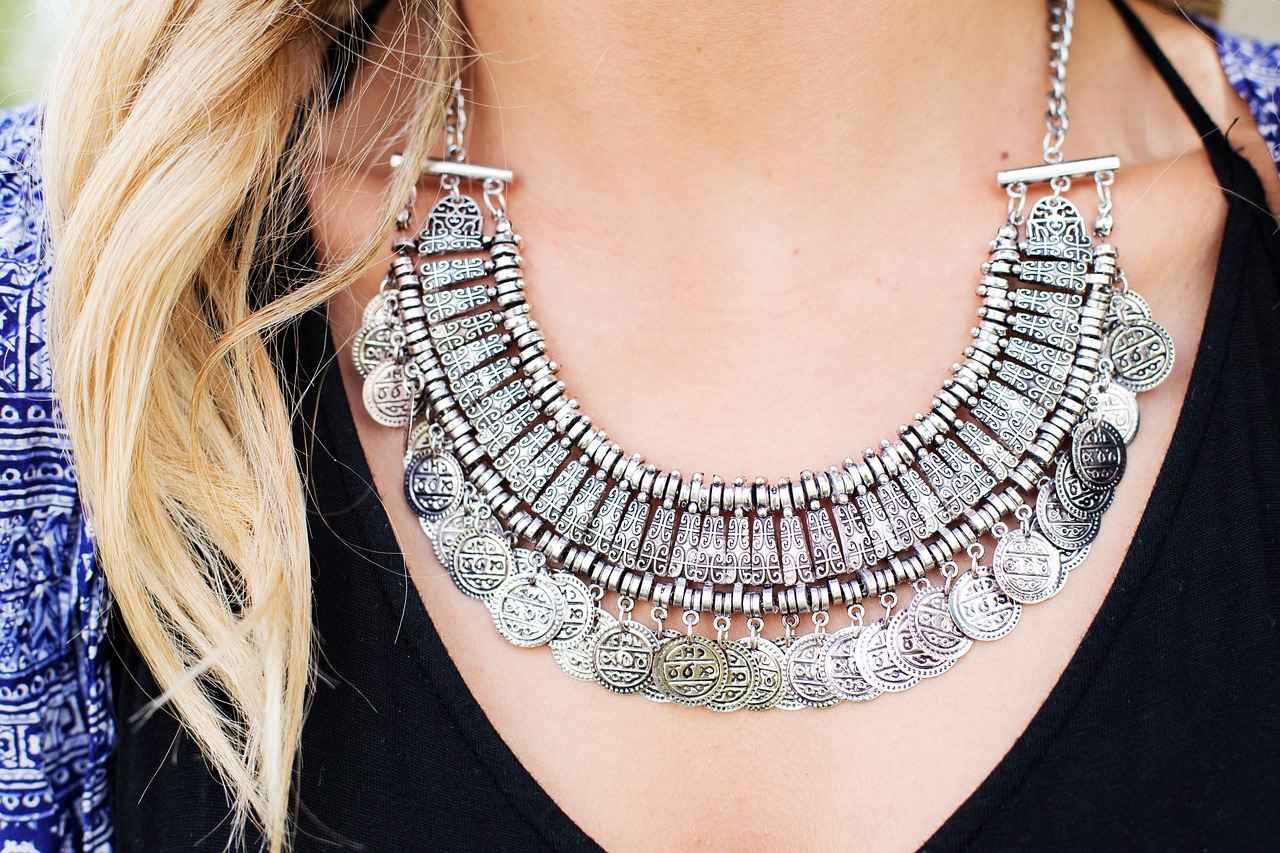
How to Organize Jewelry for Easy Access?
When it comes to jewelry storage, organization is key. Properly organizing your jewelry not only keeps it safe but also allows for easy access to your favorite pieces. An effective organization system can greatly enhance your storage experience and significantly reduce clutter, making it easier to find the pieces you want to wear.
Jewelry can easily become tangled or misplaced if not organized properly. This can lead to frustration when you are in a hurry or simply want to enjoy your favorite accessories. By implementing a thoughtful organization system, you can ensure that your jewelry remains in pristine condition while also streamlining your daily routine.
There are various methods to organize your jewelry effectively, each with its own benefits. Here are some popular options:
- Drawer Organizers: These are ideal for those who prefer to keep their jewelry hidden away. Drawer organizers can be customized with compartments to separate different types of jewelry, such as rings, necklaces, and bracelets. This prevents tangling and makes it easy to locate specific items quickly.
- Jewelry Trays: Open jewelry trays can be placed on dressers or shelves, allowing for easy visibility. They come in various materials, such as velvet or wood, and can accommodate a range of jewelry styles.
- Wall-mounted Displays: For those who love to showcase their collection, wall-mounted displays are an attractive option. These displays keep your jewelry visible and accessible while minimizing the risk of scratches and tangles.
- Travel Cases: If you’re often on the go, consider investing in a travel case. These cases are designed to keep your jewelry organized and protected while traveling, ensuring that your pieces remain untangled and secure.
Maximizing space is crucial, especially if you have a growing collection. Here are some tips:
- Use Vertical Space: Take advantage of vertical space by using tiered organizers or wall hooks. This not only saves space but also adds a decorative element to your room.
- Repurpose Household Items: Look around your home for items that can be repurposed for jewelry storage. Small bowls, trays, or even decorative boxes can serve as chic organizers.
- Limit the Number of Items: Regularly assess your collection and consider donating or selling pieces you no longer wear. This practice not only frees up space but also helps you focus on the jewelry you truly love.
Organizing your jewelry offers numerous benefits:
- Time Efficiency: When your jewelry is organized, you can quickly find what you need without wasting precious time.
- Protection Against Damage: Proper storage methods help protect your jewelry from scratches, tarnishing, and other forms of damage.
- Enhanced Aesthetics: A well-organized jewelry collection can serve as a beautiful display, adding charm to your living space.
Once you have organized your jewelry, maintaining that organization is essential:
- Regularly Clean and Inspect: Periodically clean your jewelry and inspect it for any signs of damage. This helps you keep your pieces in top condition.
- Reorganize as Needed: As your collection grows, be prepared to adjust your organization system. This ensures that your jewelry remains accessible and protected.
In conclusion, organizing your jewelry not only enhances its longevity but also improves your overall experience when selecting pieces to wear. By utilizing effective storage methods and maintaining organization, you can enjoy your jewelry collection to the fullest.
Drawer Organizers
When it comes to jewelry organization, drawer organizers are invaluable tools that can transform a chaotic collection into a neatly arranged display. These organizers are specifically designed to keep different types of jewelry separated, ensuring that each piece is easily accessible and protected from damage. By using drawer organizers, you can avoid the frustration of sifting through a tangled mess of necklaces, bracelets, and earrings, which often leads to scratches and other forms of wear.
Drawer organizers offer a multitude of benefits that enhance both the functionality and aesthetic of your jewelry storage. Firstly, they provide dedicated compartments for various types of jewelry, such as rings, earrings, and necklaces. This separation not only makes it easier to find what you need quickly but also minimizes the risk of tangling and scratching. For instance, a well-designed organizer can feature padded sections for delicate pieces, ensuring they remain in pristine condition.
- Fabric-lined Organizers: These are ideal for preventing scratches and damage. The soft lining cushions your jewelry, making them a popular choice among collectors.
- Modular Organizers: These customizable options allow you to adjust the layout according to your collection’s specific needs, providing flexibility in organization.
- Clear Plastic Organizers: These offer visibility, allowing you to see your jewelry at a glance while keeping them protected from dust and damage.
To maximize the benefits of drawer organizers, consider the following tips:
- Sort by Type: Group similar items together. For example, keep all earrings in one section and bracelets in another. This makes it easier to find what you need.
- Use Dividers: If your organizer doesn’t come with built-in dividers, consider adding your own. This helps maintain order and prevents items from shifting around.
- Regular Maintenance: Periodically check your drawer organizers to ensure everything is in its place. This routine will help you spot any items that may need cleaning or repairs.
Utilizing drawer organizers not only enhances the aesthetic appeal of your jewelry collection but also provides practical benefits. By preventing tangling and minimizing the risk of damage, these organizers help maintain the longevity and shine of your pieces. Moreover, they contribute to a more efficient jewelry selection process, allowing you to quickly find and wear your favorite items without hassle.
While drawer organizers are effective, there are common mistakes that can diminish their benefits:
- Overcrowding: Avoid cramming too many pieces into one compartment, as this can lead to tangling and damage.
- Ignoring Material Compatibility: Ensure that the materials of the organizer are suitable for your jewelry types. For example, metal organizers can scratch softer materials.
- Neglecting to Clean: Regularly clean both your jewelry and the organizer to prevent dust buildup and tarnishing.
In summary, drawer organizers are essential for anyone looking to maintain the beauty and integrity of their jewelry collection. By investing in quality organizers and following best practices for use, you can ensure that your jewelry remains protected, organized, and easily accessible.
Wall-mounted Displays
Wall-mounted displays are not only a stylish way to exhibit your jewelry, but they also offer numerous practical benefits. By providing an elevated and organized presentation, these displays enhance the overall aesthetic of your space while ensuring that your precious items remain safe and secure.
Using wall-mounted displays allows you to maximize space in your home or retail environment. Instead of cluttering surfaces or using bulky storage boxes, these displays utilize vertical space, making your collection easily visible and accessible. This approach not only keeps your jewelry organized but also transforms it into an eye-catching decoration.
- Enhanced Visibility: Wall-mounted displays allow for easy viewing of your jewelry collection. Customers or guests can admire the pieces without the need for rummaging through drawers or boxes.
- Reduced Risk of Damage: By keeping jewelry off surfaces, wall-mounted displays minimize the chances of scratches and other forms of damage that can occur when items are stacked or stored haphazardly.
- Customization Options: Many wall-mounted displays come in various designs and materials, allowing you to choose options that match your decor style. From sleek modern designs to rustic wooden displays, there’s something for everyone.
- Security: When properly installed, wall-mounted displays can be secured to prevent theft or accidental tipping, providing peace of mind for valuable collections.
Selecting the perfect wall-mounted display involves considering several factors:
- Size and Space: Assess the available wall space and the size of your jewelry collection. Choose a display that fits your area without overwhelming it.
- Material: Look for durable materials that can withstand the weight of your jewelry. Wood, metal, and acrylic are popular choices, each offering unique benefits.
- Design: Opt for a design that complements your home’s decor. A well-chosen display can enhance the overall ambiance of your space.
To keep your wall-mounted displays looking their best, regular maintenance is essential:
- Dust Regularly: Use a soft cloth to wipe down the display and jewelry to prevent dust accumulation.
- Inspect for Damage: Periodically check the mounting hardware and the condition of the display to ensure everything remains secure.
- Organize Periodically: Rearranging your jewelry can give the display a fresh look and help you keep track of your collection.
Wall-mounted displays offer a fantastic solution for showcasing jewelry while keeping it safe from damage. By enhancing visibility and providing a stylish way to organize your collection, these displays are a wise investment for anyone looking to elevate their jewelry storage. Whether for personal use or retail purposes, the benefits of wall-mounted displays are clear, making them an excellent choice for any jewelry enthusiast.

What Are Common Mistakes in Jewelry Storage?
When it comes to preserving the beauty and integrity of your jewelry, understanding common storage mistakes is crucial. Many people unknowingly engage in practices that can lead to tarnishing, scratches, and other forms of damage. By identifying these pitfalls, you can adopt better storage practices that will help your jewelry last longer and maintain its shine.
Jewelry is often a significant investment, both financially and sentimentally. Avoiding common mistakes in jewelry storage can help you save money on repairs and keep your cherished pieces looking their best. Recognizing these errors allows you to create a more effective storage system that prioritizes the safety and longevity of your jewelry.
- Storing Jewelry in Direct Sunlight: Exposure to sunlight can fade the colors of gemstones and metals. Always choose a cool, dark place for storage to prevent color loss.
- Mixing Different Types of Jewelry: Storing various types of jewelry together, such as fine gold pieces with costume jewelry, can lead to scratches and tangling. Keep them separated to maintain their condition.
- Neglecting to Clean Before Storage: Dirt and oils from your skin can cause tarnishing over time. Always clean your jewelry before placing it in storage to keep it in pristine condition.
- Using Non-Anti-Tarnish Materials: Some storage materials can cause tarnishing. Avoid using plastic bags or boxes that are not lined with anti-tarnish fabric.
- Overcrowding Storage Spaces: Stuffing too many pieces into a single box can lead to scratches and damage. Ensure your jewelry has enough space to avoid friction.
To ensure that your jewelry remains in excellent condition, consider the following tips:
- Invest in Quality Storage Solutions: Use fabric-lined jewelry boxes and anti-tarnish pouches to protect your pieces from scratches and tarnishing.
- Organize by Type: Separate your jewelry by type (e.g., rings, necklaces, earrings) to make it easier to find and reduce the risk of damage.
- Regularly Inspect Your Collection: Conduct routine checks to spot any signs of tarnishing or damage. This proactive approach can save you from costly repairs.
- Control Environmental Factors: Keep your jewelry in a stable environment, avoiding high humidity and extreme temperatures that can cause damage.
Proper jewelry storage is essential for maintaining the beauty and longevity of your pieces. By avoiding common mistakes and implementing best practices, you can ensure that your jewelry remains in excellent condition for years to come. Remember to regularly assess your storage methods and make adjustments as needed to keep your collection safe.
Storing Jewelry in Direct Sunlight
When it comes to preserving the beauty and longevity of your jewelry, one of the most critical factors to consider is how you store it. One common mistake many people make is . This seemingly minor oversight can lead to significant damage over time.
Exposing your jewelry to direct sunlight can cause fading and discoloration of both metals and gemstones. The ultraviolet (UV) rays can break down the chemical bonds in materials, leading to a lackluster appearance. For instance, colored gemstones may lose their vibrant hues, while certain metals can tarnish more quickly when exposed to sunlight. Therefore, it is essential to store your jewelry in a cool, dark place to maintain its integrity and visual appeal.
- Use a Jewelry Box: A fabric-lined jewelry box can provide a protective environment, shielding your pieces from light and dust.
- Consider Anti-Tarnish Solutions: Using anti-tarnish pouches or cloths can help absorb moisture and prevent tarnishing, further protecting your jewelry from the harmful effects of sunlight exposure.
- Keep Away from Windows: Ensure that your jewelry storage is located away from windows where sunlight can penetrate, especially during peak hours.
In addition to light, the temperature of your storage area plays a significant role in the preservation of your jewelry. Extreme temperatures can warp delicate materials and cause structural damage. Aim to keep your jewelry in a stable environment, ideally between 60°F and 75°F (15°C to 24°C).
Improper storage methods can lead to a variety of problems. Aside from fading and discoloration, jewelry can become scratched or tangled when not stored correctly. For example, mixing different types of jewelry in one container can lead to scratches on softer materials. Therefore, it’s crucial to take the time to organize your collection properly.
To create an optimal storage environment for your jewelry, consider the following tips:
- Humidity Control: High humidity can promote tarnishing, so using silica gel packets can help absorb excess moisture.
- Routine Checks: Regularly inspect your jewelry collection to catch any signs of damage early, allowing you to take preventative measures.
- Reorganize Periodically: Reassess your storage methods and reorganize as needed to ensure your jewelry remains protected and easily accessible.
In summary, avoiding direct sunlight is just one of the many factors to consider in jewelry storage. By implementing these practices, you can ensure that your cherished pieces retain their beauty and value for years to come. Remember, the right storage solutions not only protect your jewelry but also enhance your overall experience as a collector.
Mixing Different Types of Jewelry
When it comes to jewelry, mixing different types can be tempting, but it often leads to a host of problems. Understanding the implications of combining various materials is essential for maintaining the integrity and appearance of your cherished pieces.
Mixing metals, gemstones, and costume jewelry can result in scratches and tangling, which diminishes their beauty and value. Each type of jewelry has its unique characteristics and vulnerabilities, making it crucial to store them separately.
- Scratches: Harder metals can scratch softer materials. For instance, a gold ring can easily scratch a delicate silver chain.
- Tarnishing: Different metals react differently to air and moisture. Storing them together can accelerate tarnishing, especially if one piece is more prone to it.
- Tangling: Chains and necklaces can easily become tangled when mixed with other jewelry, leading to frustration and potential damage.
To preserve the condition of your jewelry, consider the following storage methods:
- Individual Pouches: Use soft pouches for each piece. This prevents scratches and keeps them organized.
- Compartmentalized Boxes: Invest in jewelry boxes with compartments to separate different types of jewelry, ensuring that they do not touch each other.
- Necklace Hooks: Use hooks for necklaces to prevent tangling and keep them visible and accessible.
In addition to proper storage, here are some best practices to maintain your jewelry:
- Regular Cleaning: Clean your jewelry regularly to remove dirt and oils that can lead to tarnishing.
- Avoid Exposure: Keep your jewelry away from harsh chemicals, such as those found in cleaning products, which can cause damage.
- Limit Wear: Avoid wearing jewelry during activities that may expose it to scratches or tangling, such as exercising or swimming.
When purchasing new pieces, consider their compatibility with your existing collection. Choose materials that complement one another and are less likely to cause damage when stored together.
Enhancing your jewelry storage can further protect your pieces:
- Use Anti-Tarnish Materials: Consider using anti-tarnish cloths or pouches to help minimize tarnishing over time.
- Climate Control: Store your jewelry in a cool, dry place to avoid humidity-related damage.
- Routine Checks: Regularly inspect your jewelry for signs of wear or damage, allowing you to address issues before they worsen.
By taking these precautions and understanding the importance of proper jewelry storage, you can ensure that your collection remains beautiful and intact for years to come. Mixing different types of jewelry not only compromises their condition but also detracts from the overall enjoyment of your collection. Embrace the beauty of each piece by giving it the care and attention it deserves.

How to Clean Jewelry Before Storage?
Cleaning jewelry before storage is essential for maintaining its beauty and preventing tarnish. Proper cleaning techniques not only enhance the longevity of your pieces but also ensure they remain in pristine condition. This guide will provide you with effective methods and tips for cleaning your jewelry before placing it in storage.
Cleaning your jewelry before storage is vital for several reasons:
- Prevents Tarnishing: Residues from lotions, perfumes, and oils can lead to tarnishing over time.
- Maintains Luster: Regular cleaning helps retain the shine and brilliance of your pieces.
- Reduces Damage: Dirt and grime can cause scratches and other forms of damage when stored.
Different materials require specific cleaning methods to avoid damage:
- Gold and Silver: Use a gentle soap solution and a soft cloth. Avoid harsh chemicals that can strip the metal’s finish.
- Gemstones: Depending on the type of gemstone, a soft brush with mild soap can be effective. Always check specific care instructions for delicate stones.
- Pearls: Wipe with a damp cloth and avoid soaking them in water, as this can weaken the string.
After cleaning, proper drying and polishing techniques are crucial:
- Drying: Use a soft, lint-free cloth to gently dry your jewelry. Ensure that no moisture remains, especially in crevices.
- Polishing: For metals, use a specialized polishing cloth to restore shine. Avoid using regular cloths that may scratch the surface.
Having the right tools can make the cleaning process more efficient:
- Soft Brushes: Ideal for intricate designs and settings.
- Jewelry Cleaning Kits: These often include cleaning solutions and polishing cloths designed specifically for various materials.
- Ultrasonic Cleaners: For a deep clean, these devices can effectively remove dirt and grime but should be used cautiously, especially with delicate items.
Establishing a regular cleaning routine can help maintain your jewelry’s condition:
- Before Storage: Always clean jewelry before placing it in storage.
- After Wearing: If you’ve worn your jewelry in environments where it may have come into contact with sweat or chemicals, a quick clean is advisable.
- Seasonally: Consider a thorough clean every few months, especially for pieces worn frequently.
To prevent damage, be cautious of the following:
- Avoid Harsh Chemicals: Never use bleach or abrasive cleaners that can damage your jewelry.
- Skip the Dishwasher: While it may seem convenient, the dishwasher can cause more harm than good.
- Don’t Mix Materials: Clean different types of jewelry separately to avoid scratches and damage.
By following these cleaning tips and techniques, you can ensure that your jewelry remains stunning and well-preserved for years to come. Regular maintenance not only enhances the beauty of your pieces but also helps you avoid costly repairs in the future.
Gentle Cleaning Solutions
When it comes to maintaining the beauty and longevity of your jewelry, play a crucial role. Jewelry can be made from a variety of delicate materials, including gold, silver, platinum, and various gemstones. Using harsh chemicals or abrasive cleaners can lead to irreversible damage, dulling the shine and compromising the integrity of your treasured pieces.
Opting for gentle cleaning solutions is essential for several reasons:
- Preservation of Materials: Delicate metals and stones can be sensitive to strong chemicals. Using appropriate products helps maintain their natural beauty.
- Preventing Damage: Harsh cleaners can scratch surfaces or cause discoloration. Gentle solutions ensure that your jewelry remains unblemished.
- Enhanced Longevity: Regular use of gentle cleaners can prolong the life of your jewelry, allowing you to enjoy your pieces for years to come.
There are various gentle cleaning solutions available that can effectively clean your jewelry without causing harm:
- Warm Soapy Water: A mixture of warm water and a few drops of mild dish soap can work wonders. Soak your jewelry for a few minutes, then gently scrub with a soft brush.
- Jewelry Cleaning Cloths: Specialized cleaning cloths are designed to gently polish and clean jewelry. They often contain non-abrasive materials that lift dirt without scratching.
- Vinegar and Baking Soda: For a natural approach, a paste made from vinegar and baking soda can be used for cleaning. Just apply it gently and rinse thoroughly.
Proper application of gentle cleaning solutions is key to effective cleaning:
- Preparation: Before cleaning, ensure that your workspace is clean and free from dust to avoid further contamination.
- Soaking: For items that can withstand water, soaking them in warm soapy water for a few minutes can help loosen dirt.
- Scrubbing: Use a soft toothbrush or a microfiber cloth to gently scrub the jewelry, paying special attention to crevices where dirt may accumulate.
- Rinsing: Rinse thoroughly with clean water to remove any soap residue, which can dull the finish if left behind.
- Drying: Pat dry with a soft cloth and ensure that the jewelry is completely dry before storing it away.
To ensure the safety of your jewelry during cleaning, keep the following in mind:
- Avoid Abrasive Materials: Never use rough sponges or brushes that can scratch the surface of your jewelry.
- Steer Clear of Harsh Chemicals: Products containing bleach, ammonia, or other harsh chemicals can damage metals and stones.
- Don’t Over-soak: Prolonged soaking can loosen settings or cause damage to certain gemstones.
While gentle cleaning solutions are effective for regular maintenance, there are times when professional help is warranted:
- Heavily Tarnished Pieces: If your jewelry is significantly tarnished or dirty, a professional cleaning may be necessary to restore its original luster.
- Loose Stones: If you notice any stones that appear loose, it’s best to consult a jeweler to secure them properly.
- Intricate Designs: Jewelry with intricate designs may require specialized cleaning techniques that professionals can provide.
By utilizing gentle cleaning solutions and following proper care techniques, you can ensure that your jewelry remains beautiful and well-preserved for years to come. Remember, taking the time to care for your pieces today can save you from costly repairs and replacements in the future.
Drying and Polishing Techniques
When it comes to maintaining the beauty and longevity of your jewelry, are essential components of your care routine. These techniques not only enhance the appearance of your pieces but also play a crucial role in preventing tarnishing and other forms of damage.
Jewelry often comes into contact with moisture, whether from wearing it in humid conditions, washing hands, or exposure to water during activities. If moisture is allowed to remain on the jewelry, it can lead to tarnishing and dullness over time. Proper drying techniques ensure that all moisture is eliminated, thus preserving the shine and integrity of your pieces.
- Soft Cloth Drying: After cleaning, gently pat your jewelry with a soft, lint-free cloth. This helps absorb moisture without scratching the surface.
- Air Drying: Place your jewelry in a well-ventilated area for a few minutes to allow any remaining moisture to evaporate completely.
- Avoid Direct Heat: Never use hair dryers or other heat sources to dry your jewelry, as excessive heat can cause damage to certain materials.
Once your jewelry is dry, polishing is the next step to enhance its shine and remove any surface tarnish. Here are some effective polishing methods:
- Use a Jewelry Polishing Cloth: These cloths are specifically designed to clean and polish jewelry without scratching. They often contain special compounds that help restore shine.
- Gentle Buffing: For metals like silver or gold, gently buffing with a soft cloth can help remove tarnish and restore luster. Always use a light touch to avoid scratching.
- Professional Polishing: For antique or high-value pieces, consider professional polishing. Experts can restore the original finish without risking damage.
In addition to drying and polishing, taking preventive measures can significantly reduce the risk of tarnishing:
- Store Properly: Always store jewelry in a cool, dry place, ideally in anti-tarnish pouches or cloths that absorb moisture.
- Avoid Exposure: Limit exposure to chemicals, perfumes, and lotions, as these can accelerate tarnishing.
- Regular Maintenance: Incorporate a routine of cleaning and polishing your jewelry to keep it looking its best.
By implementing proper drying and polishing techniques, you can significantly enhance the longevity and appearance of your jewelry. Remember, a little care goes a long way in keeping your treasured pieces shining brightly for years to come. Incorporate these practices into your jewelry care routine and enjoy the lasting beauty of your collection.
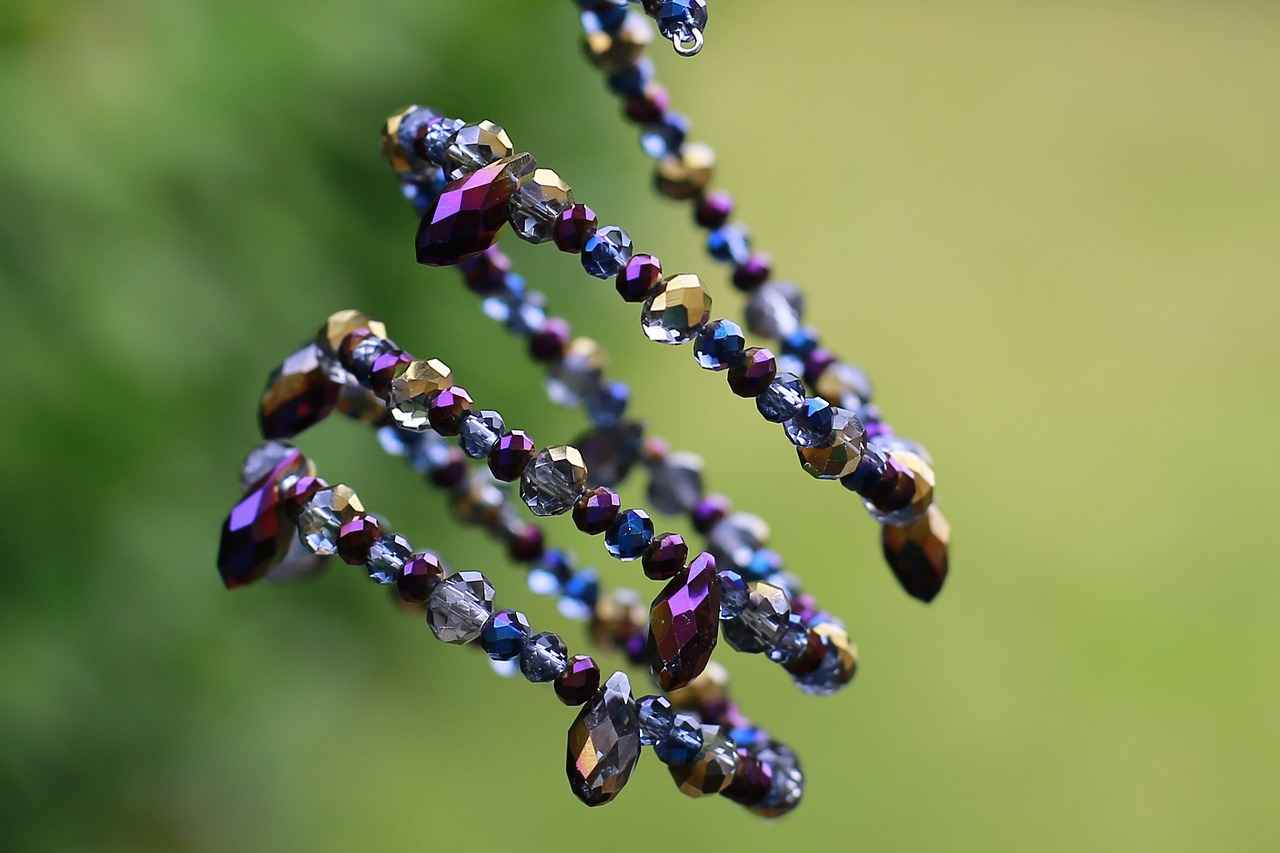
What Environmental Factors Affect Jewelry Storage?
When it comes to preserving the beauty and longevity of your jewelry, environmental conditions are paramount. Understanding how different factors impact your jewelry storage can help you create an optimal environment, ensuring that your cherished pieces remain in pristine condition. Below, we explore the key environmental factors that affect jewelry storage.
High humidity can be detrimental to your jewelry, particularly those made of silver and other metals that are prone to tarnishing. Moisture in the air accelerates the oxidation process, leading to unsightly tarnish. To combat this, consider using silica gel packets or a dehumidifier in your storage area. These tools can effectively absorb excess moisture, creating a stable environment for your jewelry.
Extreme temperatures can cause significant damage to your jewelry. For instance, high heat can warp delicate materials, while extreme cold can make certain gemstones brittle. It is essential to store your jewelry in a place with a stable, moderate temperature. Ideally, aim for a cool, dry area away from direct sunlight and heat sources, such as radiators or windows.
Direct exposure to sunlight can lead to fading and discoloration of certain gemstones and metals. UV rays can be particularly harmful to costume jewelry and pieces with colored stones. To protect your jewelry from light damage, store it in a dark, cool place. Consider using opaque storage boxes or pouches to shield your pieces from harmful light exposure.
The air quality in your storage area can also affect your jewelry. Pollutants and chemicals in the air can lead to tarnishing and corrosion. To maintain a clean environment, avoid storing your jewelry in areas with high levels of dust, smoke, or pollutants. Regularly clean your storage area and consider using an air purifier to enhance air quality.
The materials used for storing your jewelry can also play a role in its preservation. For instance, certain fabrics can cause scratches or tarnishing. Consider using fabric-lined jewelry boxes or anti-tarnish pouches that are specifically designed to protect your pieces. These materials provide a soft cushion that minimizes friction and prevents damage.
Regular inspections of your jewelry storage are essential for identifying potential issues before they escalate. Check for signs of tarnishing, scratches, or any other damage to ensure your pieces remain in excellent condition. This proactive approach can save you from costly repairs and help maintain the sentimental value of your jewelry.
By taking into account the environmental factors that affect jewelry storage, you can create an optimal environment for your collection. From controlling humidity and temperature to using appropriate storage materials, each element plays a vital role in preserving the beauty and integrity of your jewelry. Implementing these practices will not only extend the life of your cherished pieces but also ensure they remain a source of joy for years to come.
Humidity Control
When it comes to preserving the beauty of your jewelry, is a crucial factor that should not be overlooked. High humidity levels can accelerate the tarnishing process, particularly for silver and other metals. This article will explore effective strategies to manage humidity in your jewelry storage area, ensuring that your treasured pieces remain in pristine condition.
Understanding the science behind tarnishing can help you appreciate the importance of humidity control. Tarnishing occurs when metals react with moisture, oxygen, and other environmental elements, leading to discoloration and a dull appearance. In high humidity environments, the moisture in the air can significantly speed up this chemical reaction, making it essential to manage the conditions in which your jewelry is stored.
- Use Silica Gel Packets: Silica gel packets are excellent moisture absorbers. Placing a few of these packets in your jewelry box can help keep humidity levels low, protecting your pieces from tarnishing.
- Invest in a Dehumidifier: For those living in particularly humid climates, a dehumidifier can be a worthwhile investment. This appliance helps maintain an optimal humidity level, which is generally between 30% and 50% for jewelry storage.
- Store Jewelry in Airtight Containers: Airtight containers can significantly reduce exposure to moisture. Consider using these for your most valuable pieces to create a controlled environment.
- Regularly Check Humidity Levels: Investing in a hygrometer can help you monitor the humidity in your storage area. This device provides real-time readings, allowing you to take action if levels rise too high.
In addition to controlling humidity, there are other factors to consider for optimal jewelry storage:
- Temperature Regulation: Keep your jewelry in a stable temperature environment. Extreme temperature fluctuations can cause materials to expand and contract, leading to potential damage.- Keep Away from Direct Sunlight: UV rays can fade and discolor gemstones and metals. Always store your jewelry in a cool, dark place.
To further protect your jewelry, it’s essential to avoid certain practices:
- Do Not Store in Bathrooms: Bathrooms tend to have higher humidity levels due to showers and baths. Opt for a different storage location.
- Avoid Mixing Different Types of Jewelry: Different metals and materials can react negatively with each other, especially in humid conditions. Store them separately to prevent tarnishing and scratches.
Before storing your jewelry, ensure it is clean and dry. Use gentle cleaning solutions and soft cloths to remove any dirt or oils that could contribute to tarnishing. After cleaning, make sure to thoroughly dry each piece before placing it in storage.
By implementing these strategies, you can effectively control humidity and protect your jewelry from tarnishing. Regular maintenance and a mindful approach to storage will help ensure that your jewelry remains beautiful and cherished for years to come.
Temperature Considerations
When it comes to storing your precious jewelry, understanding the impact of environmental factors is crucial. Among these factors, temperature plays a significant role in maintaining the integrity and appearance of your collection. Extreme temperatures can indeed cause irreversible damage to various types of jewelry, leading to warping, discoloration, and other forms of deterioration.
Jewelry is often made from a variety of materials, including metals, gemstones, and synthetic components. Each of these materials has specific temperature tolerances. Excessive heat can cause metals to expand, which may lead to misalignment of settings or even breakage. Conversely, extremely cold temperatures can make certain materials brittle, increasing the risk of cracks and fractures.
- Metal Distortion: Prolonged exposure to high temperatures can cause metals like gold and silver to lose their shape, affecting the overall design.
- Gemstone Damage: Some gemstones, such as opals and pearls, are particularly sensitive to temperature changes, which can lead to cracks or fading.
- Adhesive Failure: Jewelry that uses adhesives to hold stones in place may experience bond failure in extreme heat, resulting in lost stones.
To protect your jewelry collection, it’s essential to store it in a location with a stable and moderate temperature. Here are some effective strategies:
- Choose the Right Storage Location: Identify a cool, dry place in your home, away from direct sunlight and heating vents.
- Use Climate-Controlled Storage: If you have a large collection, consider investing in a climate-controlled jewelry safe or cabinet that maintains optimal conditions.
- Avoid Attics and Basements: These areas often experience extreme temperature fluctuations and should be avoided for jewelry storage.
The ideal temperature range for storing jewelry is typically between 65°F to 75°F (18°C to 24°C). Maintaining this range can significantly reduce the risk of damage over time. Additionally, it’s essential to monitor humidity levels, as high humidity can exacerbate the effects of temperature on jewelry.
Investing in a simple thermometer and hygrometer can help you keep track of the temperature and humidity levels in your jewelry storage area. Regularly checking these readings ensures that your jewelry remains in a safe environment, preventing potential damage.
While temperature is a critical factor, it is equally important to consider other environmental conditions that can affect jewelry:
- Humidity: High humidity can lead to tarnishing, especially for silver jewelry. Using silica gel packets can help absorb excess moisture.
- Light Exposure: Prolonged exposure to sunlight can cause fading and discoloration in certain gemstones and metals.
By taking these factors into account and implementing effective storage strategies, you can significantly enhance the longevity of your jewelry collection. Remember, proper care and attention to environmental conditions are key to preserving the beauty and value of your treasured pieces.
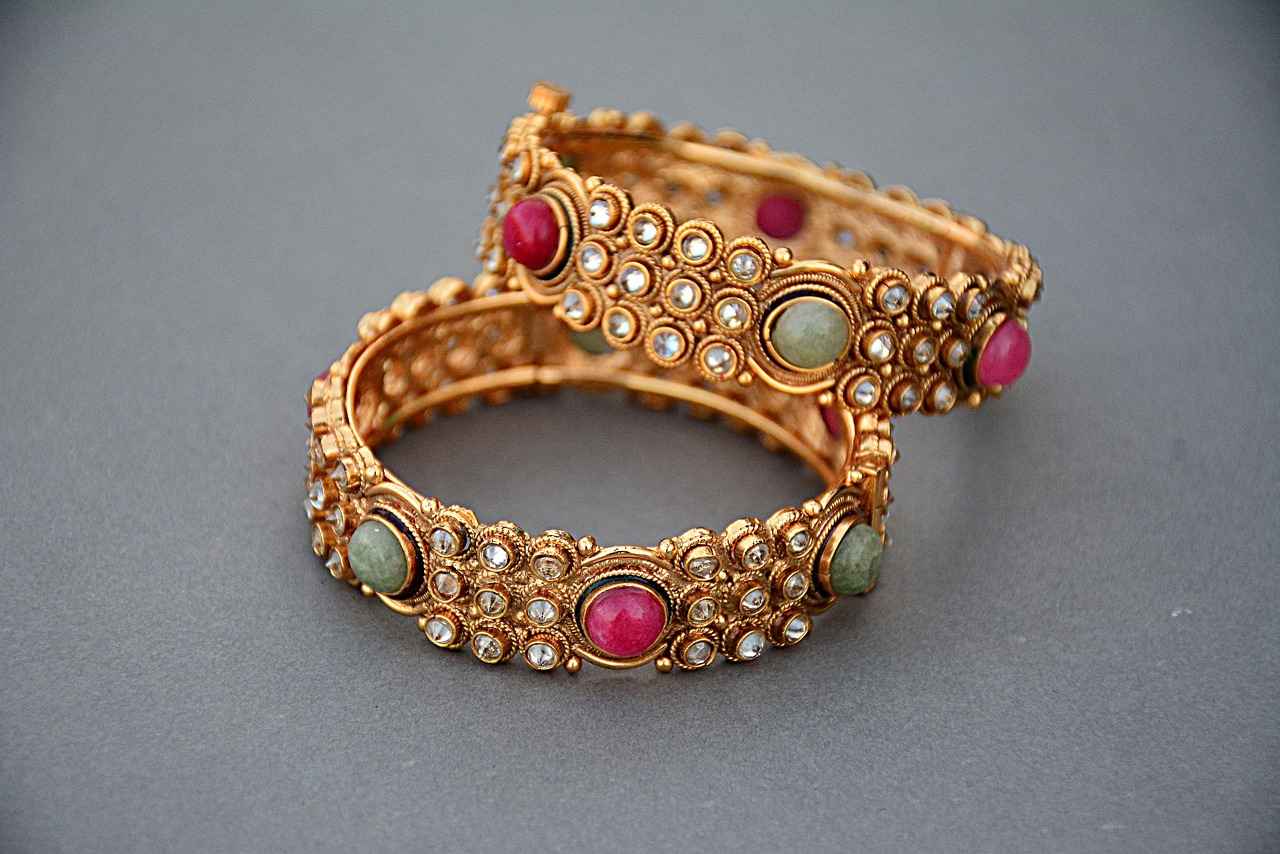
How Often Should You Check Your Jewelry Storage?
When it comes to jewelry care, regular checks on your jewelry storage are essential. These inspections play a crucial role in maintaining the integrity and beauty of your treasured pieces. By identifying potential issues early, you can ensure that your jewelry remains in excellent condition over time. Here’s a deeper look into why routine checks are vital and how to effectively implement them.
Jewelry is often a significant investment, both financially and sentimentally. Over time, factors such as humidity, temperature fluctuations, and even the materials in which jewelry is stored can lead to tarnishing, scratches, or other forms of damage. Regular inspections allow you to:
- Spot Early Signs of Damage: Minor issues, such as tarnish or loose stones, can be addressed promptly, preventing costly repairs down the line.
- Maintain Organization: Checking your storage helps keep your collection organized, making it easier to find pieces when needed.
- Assess Environmental Conditions: Monitoring humidity and temperature can help you adjust your storage methods to better protect your jewelry.
While the frequency of checks may vary based on personal preference and environmental conditions, a general guideline is to inspect your jewelry storage at least every three months. However, certain situations may necessitate more frequent checks:
- Seasonal Changes: Changes in weather can affect humidity levels; thus, checking your storage at the beginning of each season is advisable.
- After Special Occasions: If you’ve worn your jewelry for an event, inspect it afterwards to ensure it hasn’t sustained any damage.
- When Storing New Pieces: Whenever you add new jewelry to your collection, take the time to check existing pieces to ensure they are still well-organized and protected.
During your jewelry storage checks, focus on the following:
- Tarnishing: Look for any signs of discoloration, especially on silver and gold pieces.
- Loose Stones: Gently check if any gemstones are shifting in their settings.
- Scratches: Examine your jewelry for surface scratches, particularly on delicate items.
- Environmental Factors: Assess the storage area for humidity levels and temperature stability.
After conducting your inspection, it might be necessary to reorganize your jewelry storage. Here are some tips:
- Separate Different Materials: Keep metals, gemstones, and costume jewelry in separate compartments to prevent scratches and tangling.
- Use Anti-tarnish Solutions: Incorporate anti-tarnish pouches or cloths to help reduce tarnishing.
- Optimize Visibility: Consider wall-mounted displays or clear jewelry boxes that allow you to see your collection easily.
By making regular checks a part of your jewelry care routine, you can significantly extend the life and beauty of your pieces. Remember, a little proactive maintenance goes a long way in preserving the quality and sentimental value of your jewelry collection.
Routine Inspections
Routine inspections of your jewelry are an essential practice that can significantly impact its longevity and appearance. By regularly examining your pieces, you can identify any early signs of tarnishing or damage that may not be immediately visible. This proactive approach is not just about maintaining aesthetics; it’s about preserving the value and integrity of your jewelry collection.
Conducting routine inspections allows you to catch potential issues before they escalate. For instance, tarnishing can occur due to exposure to moisture and air, leading to a dull appearance. By identifying these changes early, you can take necessary actions, such as cleaning or applying protective coatings, to prevent further deterioration.
- Visual Examination: Start with a thorough visual check of each piece. Look for discoloration, scratches, or any irregularities in the metal or stones.
- Check for Loose Stones: Gently tap or shake your jewelry to see if any stones feel loose. This can prevent them from falling out and being lost.
- Inspect Clasps and Settings: Ensure that clasps are functioning correctly and that settings are secure. A faulty clasp can lead to accidental loss.
Using the right tools during inspections can enhance your ability to spot problems. Consider the following:
- Jewelry Loupe: A magnifying glass or loupe can help you see fine details, making it easier to spot scratches or loose stones.
- Soft Cloth: Use a soft cloth to gently wipe your jewelry during inspections. This can help remove dirt and oils that may contribute to tarnishing.
- Cleaning Solutions: Have gentle cleaning solutions on hand to address any tarnishing you may notice during your inspection.
It’s recommended to conduct inspections at least once every three months. However, if you wear certain pieces frequently, such as engagement rings or daily wear earrings, consider inspecting them monthly. This frequency allows you to stay ahead of any potential issues.
Regular inspections offer multiple benefits:
- Cost Savings: By catching problems early, you can avoid expensive repairs that may arise from neglect.
- Preservation of Sentimental Value: Many pieces of jewelry carry emotional significance. Keeping them in good condition ensures that they remain cherished for years to come.
- Informed Decisions: Inspections provide insights into the condition of your jewelry, helping you make informed decisions regarding repairs or even insurance valuations.
If you notice any signs of damage during your inspection, take action promptly:
- Cleaning: Use appropriate cleaning methods to address tarnishing or dirt buildup.
- Professional Evaluation: For significant issues, consider taking your jewelry to a professional jeweler for evaluation and repair.
- Storage Adjustments: If you notice recurring issues, reevaluate your storage methods to minimize future damage.
In conclusion, making routine inspections a part of your jewelry care regimen can save you time, money, and heartache in the long run. By being proactive, you ensure that your treasured pieces remain beautiful and intact for generations to come.
Reorganizing as Needed
Jewelry storage is not just about keeping your pieces safe; it is also about ensuring they remain accessible and in excellent condition. One of the most effective strategies for achieving this is through periodic reorganization of your jewelry storage system. This practice not only helps in protecting your collection but also allows you to evaluate your jewelry and make necessary adjustments.
Reorganizing your jewelry storage is essential for several reasons:
- Protection: Over time, jewelry can become tangled, scratched, or tarnished if not stored properly. By reorganizing, you can prevent these issues.
- Accessibility: A well-organized system allows you to find your favorite pieces quickly without the hassle of digging through a cluttered box.
- Assessment: Regularly reviewing your collection gives you the opportunity to assess what you own, helping you to identify pieces you may want to wear more often or even consider selling or gifting.
To make the most of your reorganization efforts, consider the following steps:
- Empty and Clean: Start by emptying your jewelry storage and cleaning each piece. Use a gentle cleaning solution to remove any tarnish or dirt.
- Sort by Type: Group your jewelry by type—necklaces, earrings, bracelets, and rings. This method simplifies the storage process and helps you see what you have.
- Evaluate Condition: As you sort, check for any damage. This is the perfect time to repair items that need attention.
- Choose Appropriate Storage: Utilize fabric-lined boxes, anti-tarnish pouches, and drawer organizers to store your jewelry effectively. Ensure that similar items are stored together to prevent scratching.
While the frequency of reorganizing may vary based on personal preference and usage, here are some guidelines:
- Seasonal Changes: Consider reorganizing your collection with each season. This allows you to rotate your jewelry and wear pieces that are more appropriate for the time of year.
- After Special Occasions: After events such as weddings or parties, take the time to reorganize. This helps to ensure that pieces are returned to their proper place and that any damage is addressed promptly.
- When Adding New Pieces: Each time you add new jewelry to your collection, it’s a good opportunity to reassess your storage. This ensures that everything fits well and is easy to access.
Maintaining an organized jewelry collection offers numerous benefits:
- Time-Saving: An organized system saves you time when selecting jewelry, making your morning routine smoother.
- Enhanced Longevity: Proper storage reduces the risk of damage, ensuring your jewelry remains beautiful for years to come.
- Increased Enjoyment: When you can easily see and access your collection, you are more likely to wear and enjoy your jewelry.
In conclusion, reorganizing your jewelry storage periodically is a vital practice that protects your collection and enhances your overall experience. By keeping your jewelry accessible and in pristine condition, you can ensure that each piece remains a cherished part of your life.
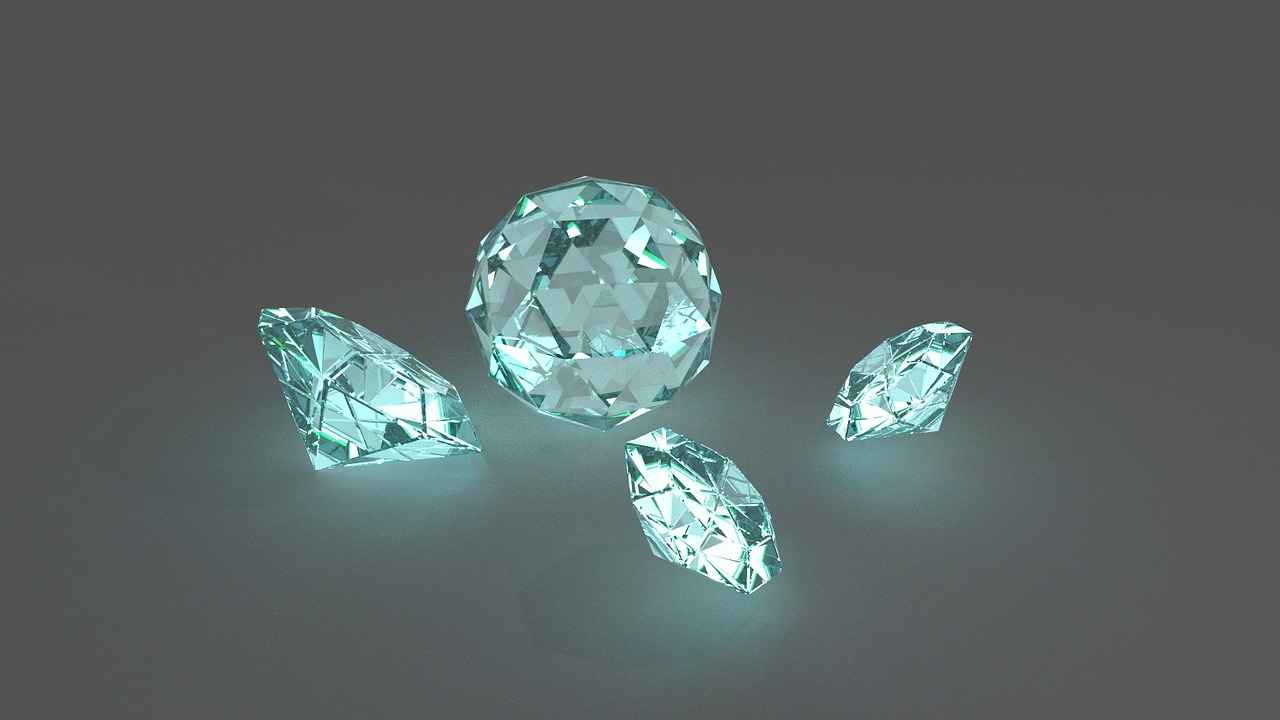
What Additional Tips Can Help Maintain Jewelry Quality?
Jewelry is not just an accessory; it often holds significant emotional value and can represent cherished memories. To ensure that your beloved pieces remain in pristine condition, it’s crucial to incorporate a few additional tips into your jewelry care routine. These tips will not only enhance the longevity of your jewelry but also keep it looking as stunning as the day you acquired it.
One of the simplest yet most effective ways to maintain your jewelry’s quality is to limit when and where you wear it. Avoid wearing jewelry during activities that may expose it to harsh conditions, such as exercising, swimming, or cleaning. Sweat, chlorine, and chemicals can tarnish metals and damage gemstones. By being mindful of when to wear your jewelry, you can significantly reduce the risk of scratches and tarnishing.
Investing in quality storage solutions is essential for protecting your jewelry. Look for jewelry boxes that are lined with soft materials to cushion your pieces and prevent scratches. Anti-tarnish pouches are also a smart investment; they contain special chemicals that absorb moisture and help keep your jewelry tarnish-free. Additionally, consider using drawer organizers to separate different types of jewelry, which can help prevent tangling and damage.
Regular cleaning is another vital aspect of jewelry maintenance. Over time, dirt and oils can accumulate on your pieces, dulling their shine. Use gentle cleaning solutions specifically designed for jewelry to avoid damaging delicate materials. After cleaning, ensure your jewelry is thoroughly dried and polished to remove any moisture that could lead to tarnishing.
Conducting routine inspections of your jewelry can help you catch potential issues before they escalate. Regularly check for signs of tarnishing, loose stones, or damaged clasps. This proactive approach can save you from costly repairs and ensure your jewelry remains in excellent condition.
Environmental factors play a significant role in the preservation of your jewelry. High humidity can lead to tarnishing, while extreme temperatures can warp materials. To create an optimal storage environment, consider using silica gel packets to absorb excess moisture. Additionally, store your jewelry in a cool, dark place to minimize exposure to light and heat.
- Keep Jewelry Away from Perfumes and Lotions: Apply perfumes and lotions before putting on your jewelry to prevent chemical reactions that can lead to tarnishing.
- Use Soft Cloths for Polishing: Regularly polish your jewelry with a soft cloth to maintain its shine and remove any surface dirt.
- Store Jewelry Separately: Avoid storing different types of jewelry together, as this can lead to scratches and tangling. Keep delicate pieces in separate compartments.
By incorporating these additional tips into your jewelry care routine, you can significantly enhance the longevity and appearance of your treasured pieces. Remember, a little extra attention goes a long way in preserving the beauty and value of your jewelry collection.
Limit Wearing Jewelry in Certain Situations
When it comes to preserving the beauty and integrity of your jewelry, one of the most effective strategies is to . Engaging in activities that may expose your jewelry to potential damage can lead to scratches, tarnishing, and other forms of deterioration. Understanding these situations can help you take proactive steps to safeguard your cherished pieces.
During activities such as exercising or swimming, your jewelry can be subjected to various forms of damage. The impact from movements, combined with sweat and water, can cause:
- Scratches: Jewelry can easily get scratched when it comes into contact with hard surfaces or other pieces.
- Tarnishing: Exposure to moisture and chemicals in pools or hot tubs can accelerate tarnishing.
- Loss: Rings and bracelets can slip off or get caught, leading to potential loss.
While all jewelry can be susceptible to damage, certain types are more vulnerable:
- Delicate Chains: These can easily break or tangle during vigorous activities.
- Gemstone-Studded Pieces: Stones can become loose or fall out due to impact.
- Gold-Plated or Silver Jewelry: These materials are often more prone to tarnishing when exposed to sweat and chlorine.
To prevent damage while engaging in physical activities, consider the following storage solutions:
- Jewelry Pouches: Use soft pouches to store your jewelry when not in use. This will keep them safe from scratches and tangling.
- Designated Jewelry Boxes: Invest in a quality jewelry box with compartments to keep different pieces organized and protected.
- Remove Before Activities: Make it a habit to remove your jewelry before exercising or swimming to avoid any accidents.
Aside from physical activities, there are other situations where wearing jewelry may not be advisable:
- Household Chores: Activities like cleaning or gardening can expose your jewelry to harsh chemicals or dirt.
- Extreme Weather Conditions: Cold weather can lead to skin shrinkage, causing rings to become loose and potentially fall off.
By consciously limiting when you wear jewelry, you can:
- Extend Lifespan: Reducing exposure to damaging conditions helps your jewelry last longer.
- Maintain Aesthetic Appeal: Keeping your pieces free from scratches and tarnish ensures they remain visually appealing.
- Reduce Repair Costs: Preventative measures can save you money on repairs and replacements.
In conclusion, being mindful of when and where you wear your jewelry is essential for maintaining its beauty and longevity. By taking simple precautions, you can enjoy your favorite pieces without the worry of damage, ensuring they remain cherished for years to come.
Invest in Quality Storage Solutions
When it comes to preserving the beauty and longevity of your jewelry, investing in quality storage solutions is paramount. High-quality storage options not only enhance the aesthetic appeal of your collection but also provide essential protection against common threats such as tarnishing and scratches. With the right approach, you can ensure that your treasured pieces remain in pristine condition for years to come.
Quality storage solutions are designed with the specific needs of jewelry in mind. Unlike standard boxes or containers, these specialized options offer superior protection against environmental factors that can lead to deterioration. For instance, well-constructed jewelry boxes often feature:
- Soft, cushioned interiors that minimize friction and prevent scratches.
- Anti-tarnish linings that help absorb moisture and reduce tarnishing.
- Separate compartments to keep different pieces organized and tangle-free.
When selecting storage solutions, consider materials that are gentle on your jewelry. Fabric-lined jewelry boxes are particularly effective, as they provide a soft surface that cushions your pieces. Additionally, look for options made from materials like:
- Wood with a protective finish to prevent scratches.
- Plastic or acrylic that is non-reactive and won’t tarnish metals.
- Anti-tarnish cloths that can be used to wrap individual pieces for extra protection.
Even the best storage solutions require regular maintenance to ensure they continue to protect your jewelry effectively. Here are a few tips:
- Regular Cleaning: Wipe down the interior and exterior of your storage boxes periodically to remove dust and moisture.
- Check for Damage: Inspect your storage solutions for signs of wear and tear, such as frayed linings or broken clasps.
- Keep Away from Direct Sunlight: Store your jewelry in a cool, dark place to prevent fading and discoloration.
Yes, different types of jewelry may require tailored storage solutions. For example:
- Necklaces: Use hooks or padded compartments to prevent tangling and kinking.
- Earrings: Consider earring organizers that keep pairs together and easily accessible.
- Rings: Ring rolls or individual slots help prevent scratches and keep them secure.
As your jewelry collection grows, it’s essential to reassess your storage solutions regularly. Consider factors like:
- New Additions: If you acquire new pieces, ensure your storage can accommodate them without overcrowding.
- Changes in Environment: If your home’s humidity or temperature fluctuates, you may need to invest in additional protective measures.
In summary, investing in high-quality storage solutions is a crucial step in preserving the beauty and integrity of your jewelry. By choosing the right materials, maintaining your storage, and adapting to your collection’s needs, you can ensure that your treasured pieces remain protected against tarnishing and scratches.
Frequently Asked Questions
- How can I prevent my jewelry from tarnishing?
To prevent tarnishing, store your jewelry in anti-tarnish pouches or fabric-lined boxes. Keeping your pieces in a cool, dry place away from direct sunlight also helps maintain their shine.
- What type of storage is best for delicate jewelry?
Fabric-lined jewelry boxes are ideal for delicate pieces as they cushion the jewelry and reduce friction. Additionally, using individual pouches for each item can prevent scratches and tangling.
- Should I clean my jewelry before storing it?
Absolutely! Cleaning your jewelry before storage is crucial. Use gentle cleaning solutions to remove dirt and oils, and ensure everything is completely dry to avoid tarnishing.
- How often should I check my jewelry storage?
It’s a good idea to check your jewelry storage every few months. Regular inspections help you catch any signs of damage or tarnishing early, so you can take action before it worsens.
- Can I store different types of jewelry together?
It’s best to keep different types of jewelry separate. Mixing metals, gemstones, and costume pieces can lead to scratches and tangling, so organizing them by type is a smart move.
